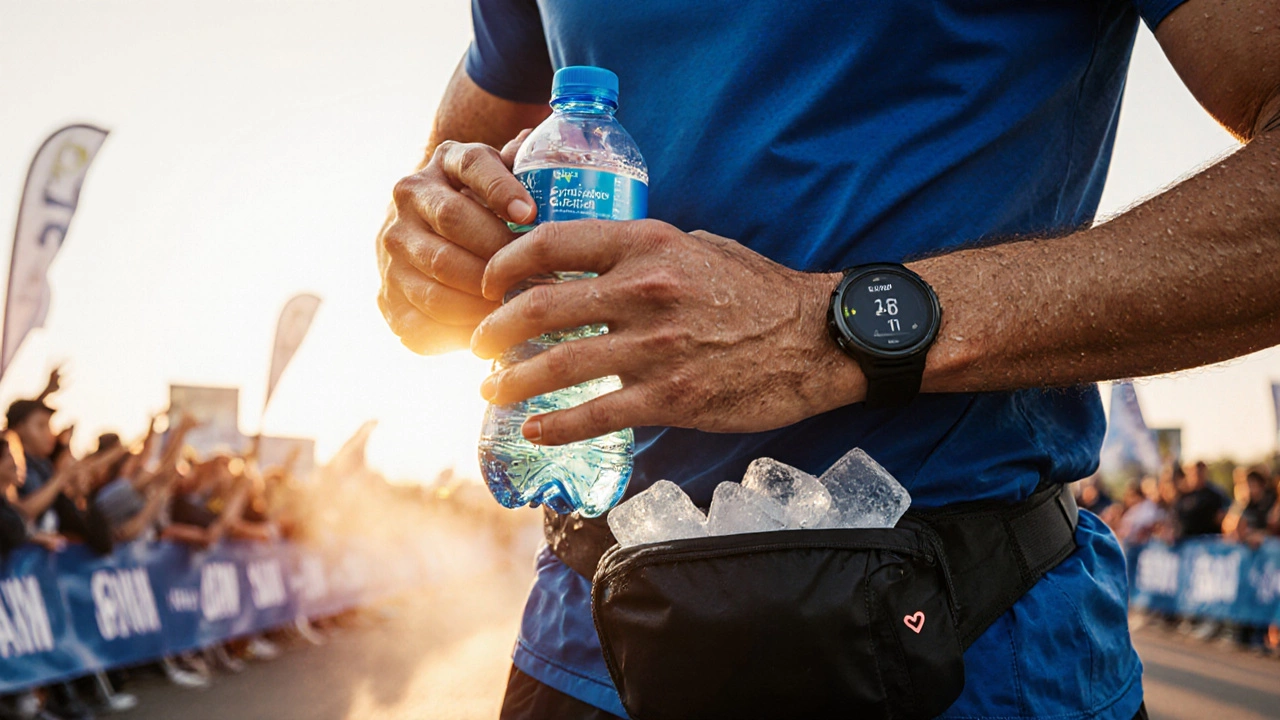Marathon Recovery Timeline: What to Expect After the Finish Line
When planning a marathon recovery timeline, the schedule of physiological, nutritional, and mental steps a runner follows after a race. Also known as post‑race recovery schedule, it helps athletes manage fatigue and return to training safely. Understanding muscle soreness, the ache and stiffness that builds up in muscle fibers after prolonged running is a key part of that plan. Proper nutrition, the intake of carbs, protein, and fluids needed to repair tissue and refill energy stores also drives how quickly you bounce back. Finally, sleep, the restorative rest phase that supports hormonal balance and tissue growth and stretching, the gentle mobility work that improves blood flow and reduces tightness round out the core pillars of a solid recovery strategy.
Right after you cross the line, your body shifts from burning fuel to repairing damage. The first 30 minutes are all about re‑hydrating and topping up glycogen. A quick drink with electrolytes and a banana or a sports gel can jump‑start the refill process. This immediate step sets the stage for the next phase, where muscle fibers begin the repair cycle.
Key Phases of Recovery
Within the first 24‑48 hours, muscle soreness typically peaks. The microscopic tears in your quads, calves, and hamstrings trigger inflammation, which feels like that familiar stiffness. Applying a light compression wrap or taking a modest cold‑water soak can calm the swelling without halting circulation. During this window, focus on gentle movement—short walks or easy cycling—to keep blood moving and prevent stiffness from turning into chronic tightness.
Nutrition takes a front‑row seat on day two and three. Aim for a 3:1 ratio of carbs to protein in each meal to fuel glycogen restoration while providing the amino acids needed for muscle repair. Think chicken‑rice bowls, sweet potatoes with beans, or a smoothie packed with whey protein and fruit. Antioxidant‑rich foods like berries and leafy greens also help blunt oxidative stress, speeding up the healing process.
Sleep becomes the unsung hero from night two onward. While you might be tempted to stay up watching marathon replays, quality sleep triggers the release of growth hormone, which directly supports tissue rebuilding. Try to hit at least eight hours in a dark, cool room. If you struggle to fall asleep, a short session of deep‑breathing or progressive muscle relaxation can calm the nervous system.
Stretching and mobility work belong in the recovery toolbox from day three onward. Static stretches held for 30 seconds each, combined with foam‑rolling, can release lingering tension without over‑loading sore muscles. Pay special attention to the hip flexors and IT band, common hotspots after long‑distance runs. Gentle yoga flows that emphasize breath and balance can also aid in mental unwinding, which is just as important as the physical side.
Beyond the first week, most runners transition back to light training. The timeline is personal—some athletes feel ready for a short jog at day five, while others need a full ten days before hitting the pavement again. Listen to your body: if your heart rate is still elevated at rest or you notice lingering joint pain, give yourself extra recovery days. A gradual ramp‑up, starting with 20‑minute easy runs and adding a minute each session, prevents a premature return that could lead to injury.
Mindset matters too. Post‑marathon blues are common, especially after months of disciplined training. Setting a new short‑term goal—like a 10 km race or a hill repeat session—can provide fresh motivation. Keep a journal of how you feel each day; tracking sleep quality, nutrition, and soreness can reveal patterns and help you fine‑tune future recovery plans.
All of these pieces—muscle repair, proper fuel, restorative sleep, and thoughtful movement—interlock to form a comprehensive marathon recovery timeline. Below you’ll find articles that dive deeper into each element, from detailed nutrition guides to stretching routines, so you can craft a recovery plan that fits your schedule, goals, and body’s signals.
 4 Oct 2025
4 Oct 2025
Learn exactly how your body reacts during the first 48hours after a marathon, from inflammation and glycogen loss to sleep, nutrition, and when to seek help.
View More
